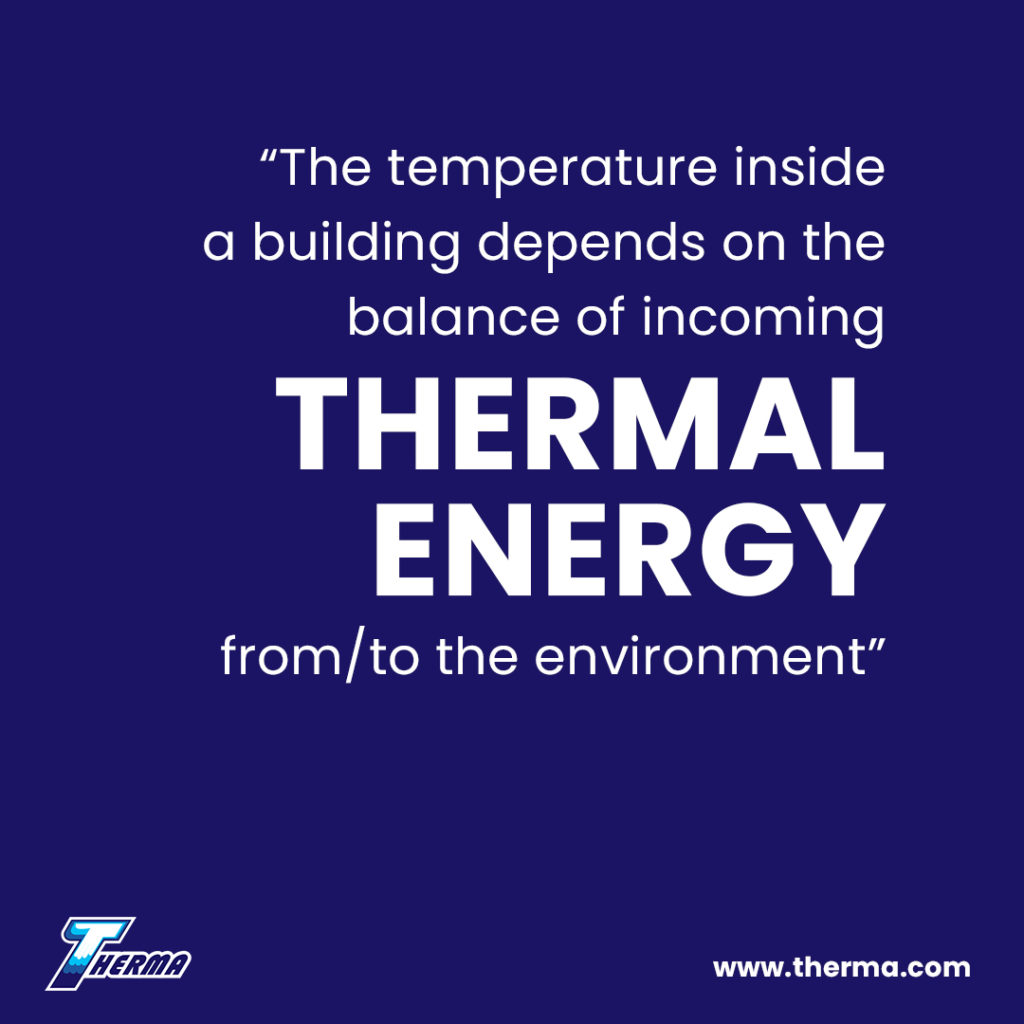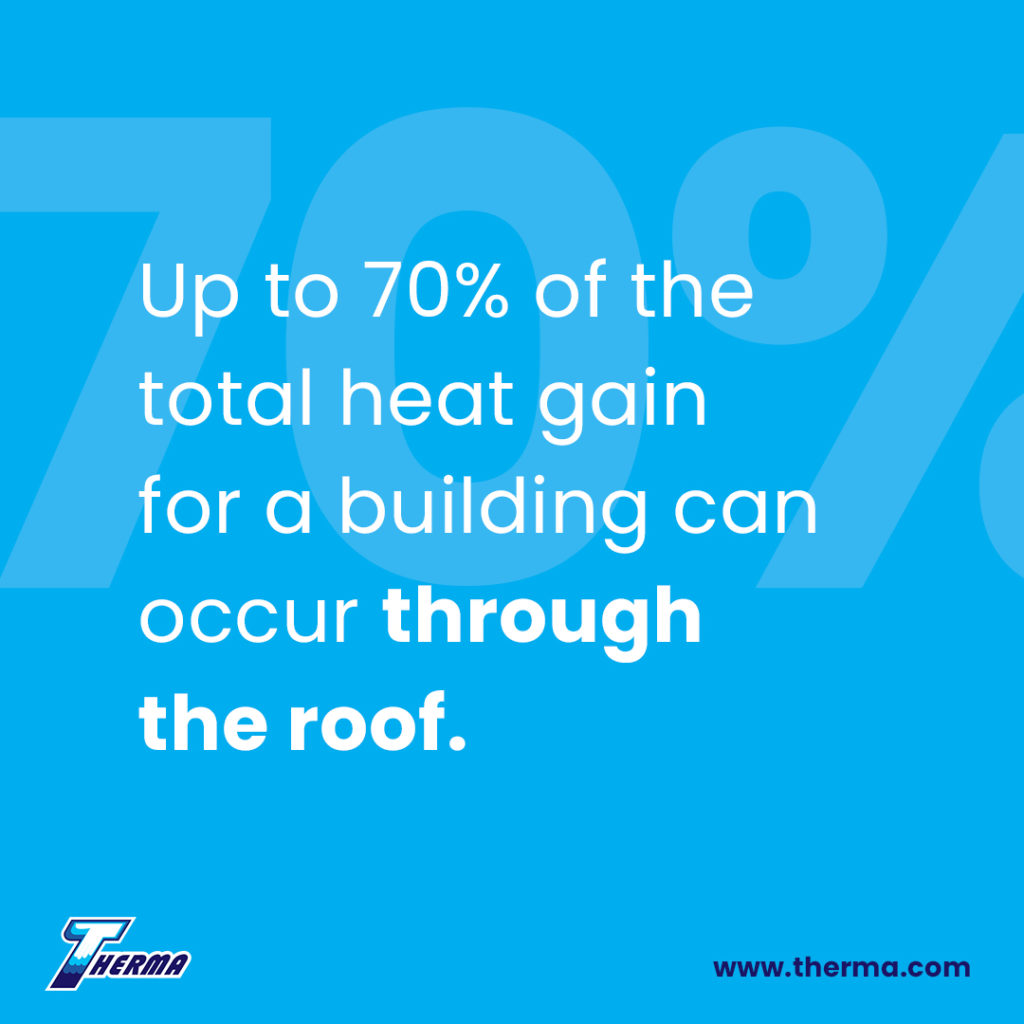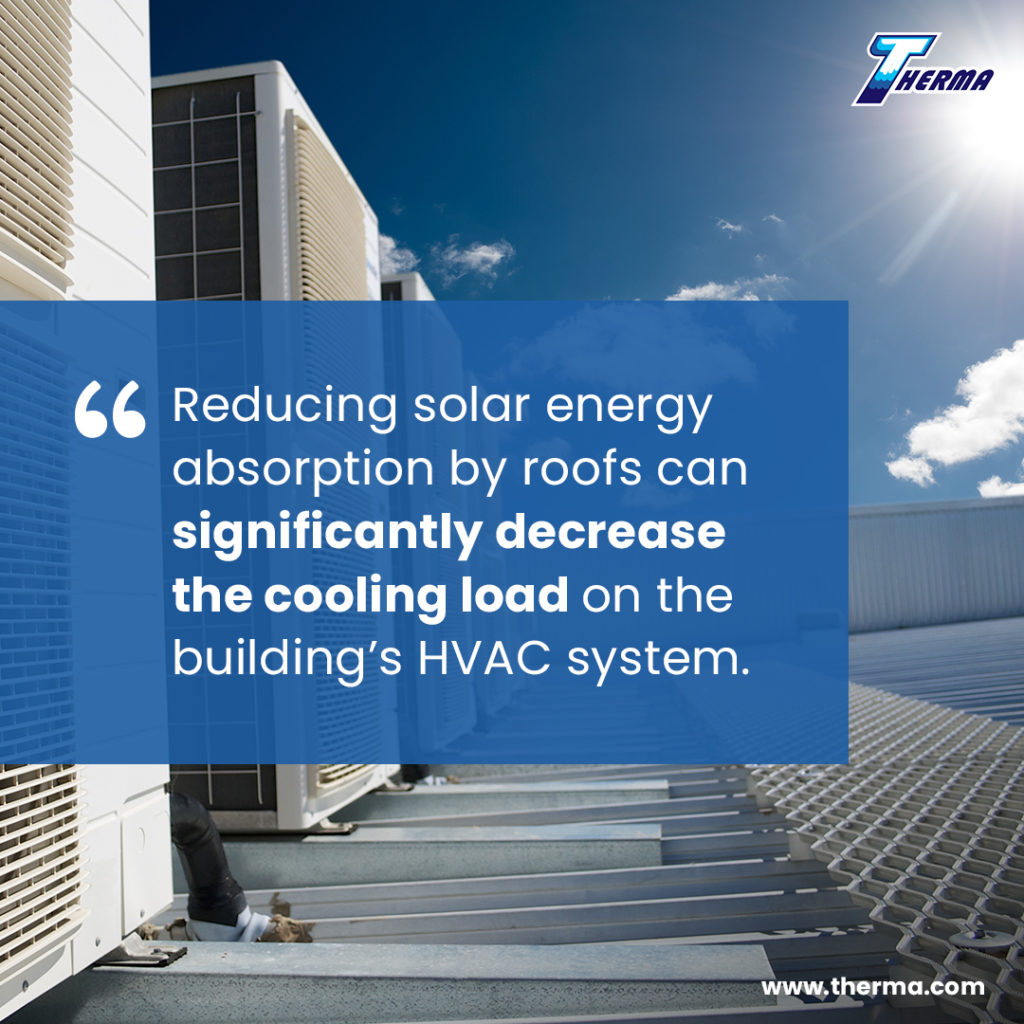Reflective or “cool” roofs are gaining popularity as an energy efficiency enhancement measure for buildings. They work primarily by reducing heat gain through a building’s roof and can be used to reduce HVAC system demand during hot periods.
Thermal Control In Buildings

If the rate of heat gain exceeds the loss, the building’s interior temperature will increase, and if the loss exceeds the gain the building will cool down. If the heat gain and loss are in equilibrium then the building will experience no change in temperature. The role of the heating, ventilation and air-conditioning (HVAC) system is to add or remove thermal energy from the building artificially in order to maintain the desired interior temperature at all times.
The primary contributors to heat gain or loss in buildings are the sun, the surrounding ambient air, the ground on which a building stands and the sky. Heat exchange with the air is by convection and a building will gain heat if the ambient temperature is higher than the interior temperature of the building and vice versa. Incoming solar radiation strikes the opaque walls and roof, where it is either absorbed or reflected, or passes through the transparent windows and is in turn reflected or absorbed by interior surfaces. The absorbed solar radiation causes an increase in the temperature of these opaque surfaces and this additional thermal energy can subsequently be transferred into the building’s interior air.
Heat Gain Through The Roof Due To Solar Radiation
When solar radiation strikes the roof of a building, a portion of it is absorbed by the roofing material while the rest of it is reflected away from the building. The fraction of solar radiation that is absorbed depends on the surface properties of the roofing material and the angle of incidence of the incoming radiation. The more oblique the incoming radiation, the greater the fraction of reflection for a given surface while certain surfaces are more reflective than others.
The absorbed solar radiation causes the roof surface temperature to increase. Some of this additional thermal energy will be transferred to the ambient environment through convection while some of it will be transferred through the roof and into the building via the ceiling. The heating of the ambient air in built up areas is called the urban heat island effect and contributes to additional building heating by surrounding buildings with warm air.

Reducing Solar Heat Gain
Solar heat gain can be mitigated by reducing the intensity of the incoming solar radiation (shading), decreasing the amount of solar energy that enters the building (shielding or reducing the number / size of windows), or increasing the fraction of the incident solar radiation that is reflected rather than absorbed on the exterior building surfaces. The latter can be achieved by altering the surface finish to be more reflective to solar radiation and is the mechanism by which reflective roofs operate. Greater reflectivity can be achieved by simply painting the roof with a light colored paint but highly reflective paints or highly reflective materials can yield better results.
How Effective Is Reflective Roofing & What Is Its Effect On The HVAC System?

This effect is further bolstered by the reduction of the urban heat island effect associated with cooler building surfaces. On the other hand, an additional demand may be incurred due to reduced solar heat gain during the cold winter months when the HVAC system is being used for heating. This additional load is however typically small when compared to the reduction in summer cooling demand. The exact extent of this HVAC demand decrease depends on a number of factors including local solar intensity, the orientation, construction and exposure of the roof, and building design and thermal performance and is therefore highly site specific. Reflective roofing should however result in lower HVAC load in most buildings and certainly contributes to lower HVAC demands during the typically highest demand hot summer periods.
By Michael Owen, PhD
Michael is a mechanical engineer working in academia. His research encompasses various aspects of fluid dynamics and heat transfer with a strong emphasis on industrial heat exchangers.
Sources:
- https://www.energy.gov/energysaver/energy-efficient-home-design/cool-roofs
- https://www.buildings.com/article-details/articleid/12606/title/catch-rays-with-reflective-roofing
- http://www.thermopedia.com/content/603/
- https://www.sciencedirect.com/science/article/pii/S2095263514000399
- https://www.epa.gov/heat-islands
- https://www.facilitiesnet.com/roofing/article/Do-Cool-Roofs-Fit-In-Cool-Climates—1526







